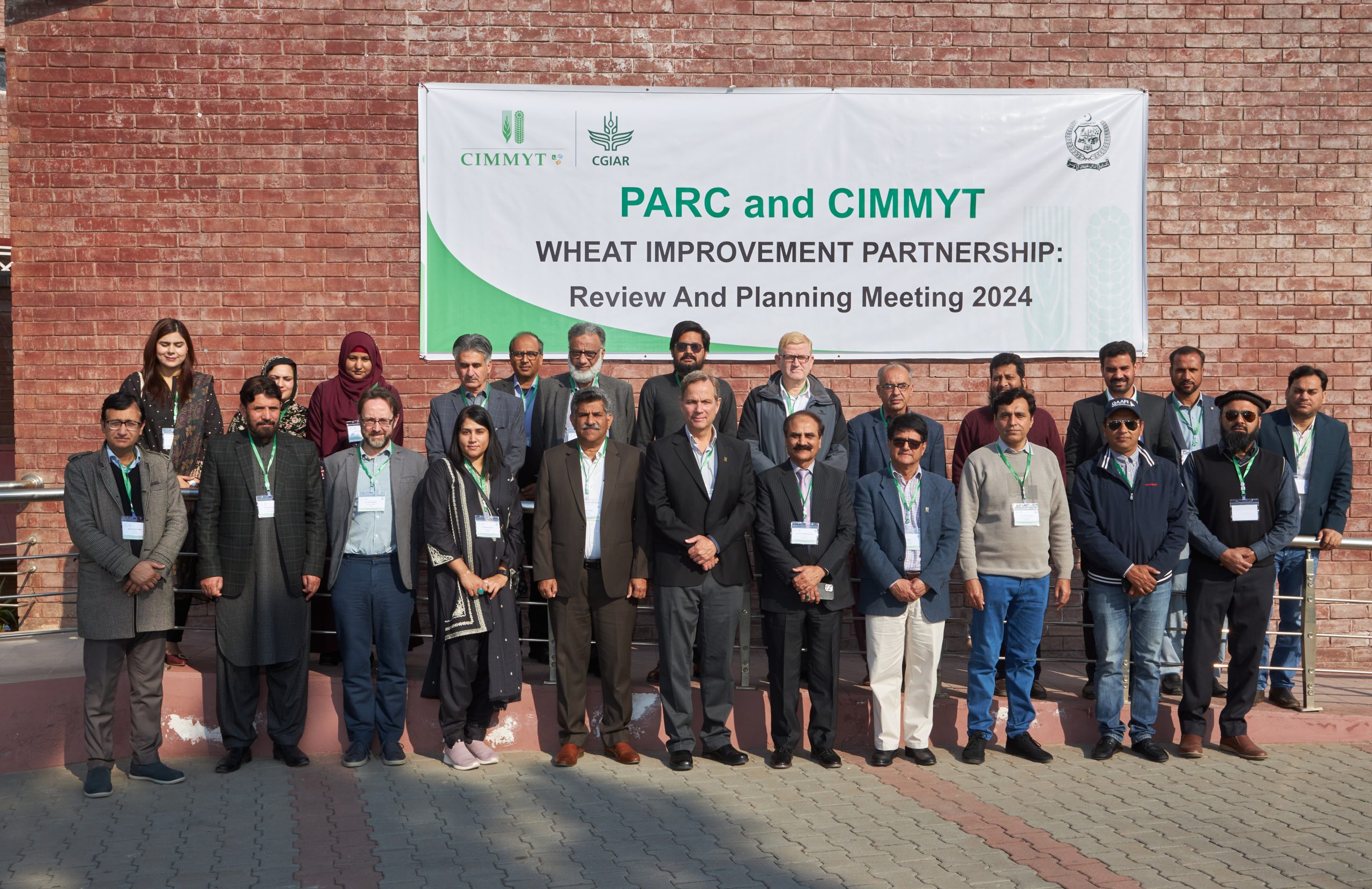CIMMYT Global Wheat Program (GWP) scientists visited National Agricultural Research System (NARS) partners in Pakistan, Nepal and India in February 2024.
NARS partners described their current priorities and recent changes in activities, while CIMMYT shared its recent efforts to modernize wheat breeding and highlighted opportunities for enhanced collaboration on wheat improvement. GWP representatives include Kevin Pixley, interim director of wheat, scientists Naeela Qureshi, Velu Govindan, Keith Gardner, Sridhar Bhavani, TP Tiwari and Arun K Joshi.
Charting the future of wheat in South Asia
CIMMYT and NARS leaders held one-day meetings in each country to review and plan their wheat improvement partnerships, with 25-30 wheat scientists from each country in attendance. These meetings aimed to review and identify bottlenecks in wheat impact pathways in each country, describe recent changes in CIMMYT and NARS partner breeding programs, and prioritize and agree updates to the NARS-CIMMYT collaboration on wheat improvement.
NARS partners highlighted their wheat improvement programs through field visits to research stations. Visitors visited Pakistan Research Institute of Wheat (ARI), Faisalabad and National Agricultural Research Center (NARC), Islamabad; National Wheat Research Program (NWRP), Bhairahawa and National Plant Breeding and Genetics Research Center (NPBGRC), Nepal Marta; and Indian Institute of Wheat and Barley Research (IIWBR), Punjab Agricultural University (PAU), Borlaug Institute for South Asia (BISA) and Indian Agricultural Research Institute (IARI).
The GWP team also visited: Faisalabad University of Agriculture, with a special focus on the zinc biofortification collaborative work in Pakistan; Farmers’ fields in Nepal to learn about the participatory evaluation of elite wheat lines (candidates for new variety release) and to hear from farmers Challenges and expectations for improved varieties; and Lumbini Seed Company, to understand the key role, bottlenecks and opportunities for seed companies in moving from research to impact on the field.
NARS scientists and directors from all three countries are enthusiastic about the opportunity to strengthen the partnership to adopt some of the modern technologies that AGG will bring to CIMMYT.Partners are particularly keen on
- Taking in earlier generations of varieties separates the breeding lines, allowing them to be selected in their own environment.
- Model and explore strategies to shorten the reproductive cycle.
- Applying quantitative genetics tools to better select parents for crossing blocks.
- Use experimental designs that increase efficiency.
- Explore opportunities to jointly implement improvements through shared testing plans, communities of practice (e.g. in quantitative genetics or using exotic germplasm to address the challenges of climate change).

Pixley said the visit provided an opportunity for CIMMYT and NARS wheat scientists to exchange experiences and ideas and explore ways to strengthen collaboration to enhance our joint impact on wheat farmers and consumers.
Soon after these visits, the Bangladesh Wheat and Maize Research Institute (BWMRI) contacted CIMMYT to request a similar review and planning meeting to modernize and strengthen its wheat improvement partnerships.
#Unleashing #power #global #wheat #science #collaboration
Image Source : www.cimmyt.org
